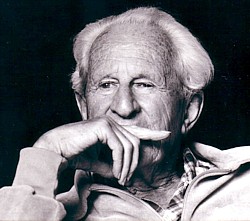Esquire recently featured an interesting piece on the re-development of the men’s section of famous East Coast America prep icon J. Crew, and how this re-development helped shape the way men look at fashion.
Jenna Lyons glides into Drexler’s office after her summons on the intercom. He asks her: “When did the light go off that we were gonna go after men’s in a different way? I remember saying, ‘Clothes suck out there. Where do guys shop?’ I remember saying, ‘No one’s doing something right.’ I vaguely remember saying that.”
So launched the hard task of completely re-vamping the way men’s fashion looks but, more importantly, the way men think about fashion. The article comically reminds the reader of Seinfeld. Just think Seinfeld, and you can recall the state of men’s fashion in the 1990s. But how can a company completely overhaul a market so large? How can they make men more comfortable and willing to purchase fitting jeans? Tailored suit jackets? Narrower lapels? More minimalist collars, with a better spread?

J. Crew has used three main factors to see an accelerated rate of adoption of its clothing and, subsequently, a large increase in market share.
Three main factors of accelerating the rate of adoption were applied throughout the course of a decade: joint ventures, media/product placement, and celebrity endorsement.
One thing that J. Crew is now notorious for is its joint ventures. Through the mantra of “In Good Company,” J. Crew has partnered with companies like Timex, DODOcase, Corgi, Sperry Top Sider, Barbour, Mougin & Piquard, and The Laundress to produce exclusive items.
The company has reached out to form partnerships with celebrities like Gwyneth Paltrow. That single partnership led them to an 8% traffic increase for their online store. Other prominent individuals like First Lady Michelle Obama frequently wears J. Crew dresses to events that have high media exposure. Further, it is not uncommon to see J. Crew pieces appear on various talk shows, television episodes (including shows such as 30 Rock) or, allegedly, the entire wardrobe for films such as The Romantics. This included such young male stars as Josh Duhamel and Adam Brody suited in the company’s Ludlow suiting line — a suit fitted right off the rack.
The revamp and the accelerating factors seem to be working: J. Crew is now seen as a leader in men’s fashion, has seen incredible success in the retail industry for both men’s and women’s clothing, has experienced a successful expansion into Canada and is planning its launch in the UK.
 Follow
Follow
